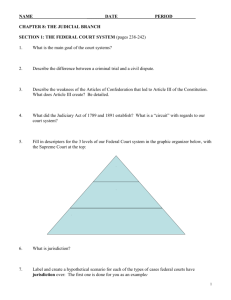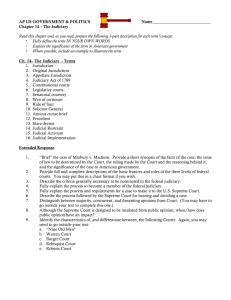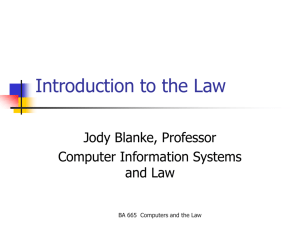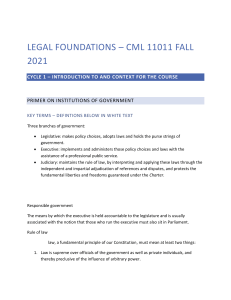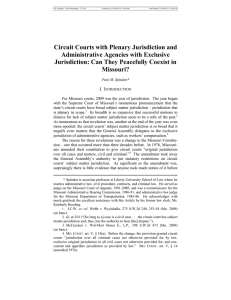the Federal Judiciary
advertisement
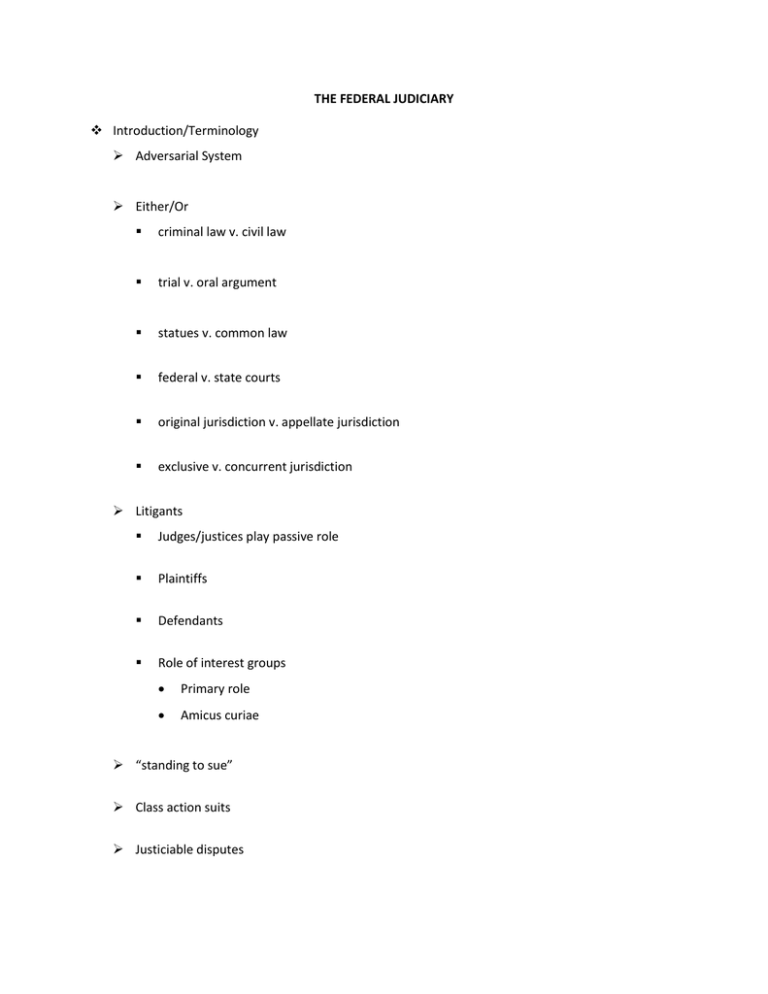
THE FEDERAL JUDICIARY Introduction/Terminology Adversarial System Either/Or criminal law v. civil law trial v. oral argument statues v. common law federal v. state courts original jurisdiction v. appellate jurisdiction exclusive v. concurrent jurisdiction Litigants Judges/justices play passive role Plaintiffs Defendants Role of interest groups Primary role Amicus curiae “standing to sue” Class action suits Justiciable disputes Structure of the Federal Judiciary System Constitution—originally had: Judiciary Act of 1789 Constitutional Courts Legislative Courts Specific jurisdiction Stems from: Examples: Judges term: FOCUS: Constitutional Courts Original jurisdiction determine: Appellate jurisdiction Only concerned with: State to federal? US Districts Courts (91) Overview: Jurisdiction: Statistics: Diversity of citizenship cases: “Players” Clerks, bailiffs, stenographers, court reporters, probation officers, federal marshals Magistrates: US Attorney US Court of Appeals (Circuit Court of Appeals) appeals from: 12 Judicial Circuits 4th Circuit Court of Appeal 9th Circuit Court of Appeal 5th Circuit Court of Appeal 3 judge panels v. “en banc” Focus: NO trial—hearing only Precedent: US Court of Appeals for the Federal Circuit 13th created in 1982 12 judges Specialized cases US Supreme Court Functions National supremacy of law Disputes Uniformity 1 Chief Justice & 8 Associate Justices Total number Jurisdiction (see Table 16.1, page 474) Original Appellate Federal route State route The Politics of Judicial Selection Nomination and confirmation Constitutional insulation from public/political pressure—federal judges/justices Power held by President Power held by Senate The Lower Courts Senatorial courtesy (unwritten tradition) Power of ONE senator to void nomination District court nominees Circuit court of appeal nominee Vacancy occurs—submission of candidates’ names to Attorney General to be given to President Vetting of candidates Self-promotion District court v. court of appeal Judicial nominations and partisanship politics Tradition Change Courts of appeal (trickled down to district courts) Role of interest groups “recess appointments” Use of filibuster Cloture vote – November 2013 Nomination to the Supreme Court Presidential legacy Vacancy . . . 1 every 2 years—VARIES! Vetting Role of Senate Judiciary Committee Pre/post 1960s Johnson, Nixon & Reagan HW Bush and Clarence Thomas Clinton GW Bush John Roberts Harriet Miers Samuel Alito Obama & Sonia Sotomayor (2009) and Elena Kagan (2010) Opposition most likely if: Opposition is supposed to based on:



